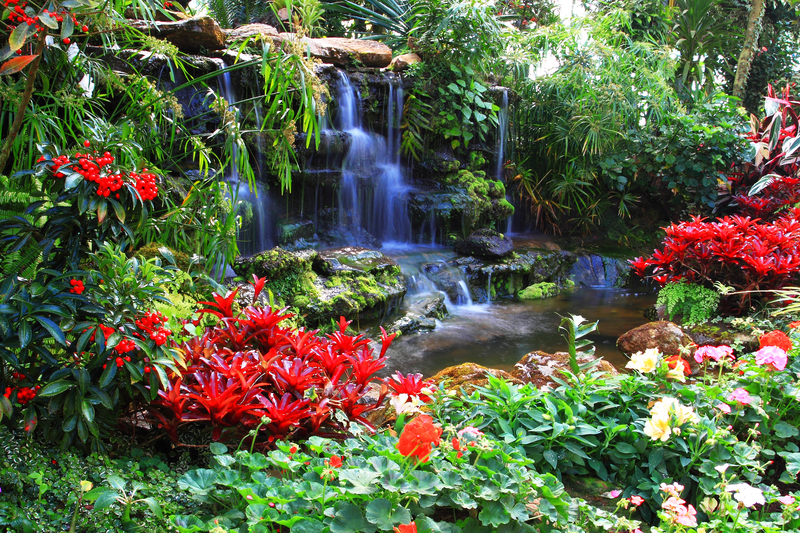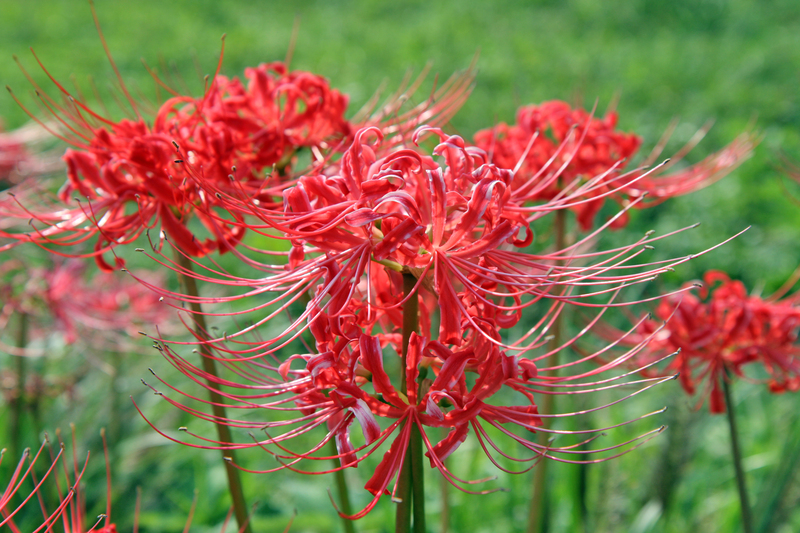Create Exotic Vibes: Tropical Plants That Work Wonders in UK Gardens
Are you dreaming of infusing your UK garden with a lush, exotic vibe? Imagine the sensation of wandering through foliage-rich landscapes reminiscent of tropical paradises, right at home. With careful plant choices and a little know-how, you can create your own slice of heaven. In this comprehensive guide, we'll reveal the best tropical plants for UK gardens, tips for nurturing them, and secrets for cultivating a space that's positively bursting with exotic color and drama.
Why Bring Tropical Plants to UK Gardens?
The UK climate may be famous for its unpredictability, but a growing number of gardeners are proving that you don't need Mediterranean summers to enjoy a tropical-inspired oasis. As climate patterns shift and more hardy exotics become available, it's easier than ever to create an escape from the everyday. Exotic plants provide:
- Striking architectural shapes
- Vivid colors and bold foliage
- Seasonal interest, even in colder months
- Biodiversity and food for pollinators
- A unique focal point for outdoor spaces
Whether you have a shady city courtyard or a spacious rural setting, there's a hardy tropical plant that can bring that exotic magic to your garden.

Top Exotic Plants for Tropical Vibes in UK Gardens
Selecting the right tropical species is key to achieving a lush, dramatic look with minimal risk. Some exotic plants are surprisingly well-suited to the UK's weather, especially with a little winter care.
1. Trachycarpus Fortunei (Chusan Palm or Windmill Palm)
A true staple for exotic UK gardens, Trachycarpus fortunei is admired for its cold-hardiness and fan-like leaves. Able to withstand temperatures down to -15?C, it is perfect for both experienced and novice gardeners.
- Position: Full sun to partial shade
- Height: Up to 12m in maturity
- Care tips: Keep well-watered during summer and mulch its base in winter
2. Musa basjoo (Japanese Hardy Banana)
No tropical garden is complete without the large, lush leaves of the banana plant. Musa basjoo is the hardiest banana and can survive most UK winters if given some protection.
- Position: Sheltered spot, protected from harsh winds
- Height: 2-3m, sometimes more
- Care tips: Cut back leaves after the first frost and mulch heavily
3. Dicksonia antarctica (Tree Fern)
Bring Jurassic drama to your landscape with tree ferns. Their shaggy trunks and arching fronds evoke a sense of ancient rainforests.
- Position: Part to full shade
- Height: 2-4m (slow-growing)
- Care tips: Keep crowns moist and wrap trunks for winter protection
4. Tetrapanax papyrifer (Rice Paper Plant)
Famed for its enormous, deeply lobed leaves, Tetrapanax papyrifer creates a stunning, jungly effect. It's fast-growing and ideal for dramatic borders.
- Position: Sun or part shade
- Height: 3-5m
- Care tips: Protect roots from severe frost with mulch
5. Fatsia japonica (Japanese Aralia)
Another popular hardy tropical plant, Fatsia japonica, thrives in shade and offers glossy, hand-shaped leaves all year round.
- Position: Shade or semi-shade
- Height: 2-3m
- Care tips: Water well in dry weather, prune for shape
6. Cordyline australis (Cabbage Palm)
This striking plant boasts long, sword-like leaves and brings a distinctly sub-tropical feel to any UK garden.
- Position: Full sun
- Height: 5-8m
- Care tips: Protect the crown in harsh winters, especially when young
7. Cannas
For splashes of color as well as architectural foliage, Cannas are unbeatable. Their lush leaves and vibrant flowers command attention all season long.
- Position: Full sun, sheltered from wind
- Height: 1-2m
- Care tips: Lift and store rhizomes overwinter in colder regions
8. Phormium (New Zealand Flax)
If you love bold, sword-shaped foliage, Phormium adds all-year-round structure and color, with varieties ranging from deep burgundy to variegated green-and-yellow.
- Position: Full sun to partial shade
- Height: 1-3m depending on variety
- Care tips: Prune old leaves to keep plants tidy
9. Hedychium (Ginger Lily)
For fragrant exotic blooms, the ginger lily is a fabulous option. It produces aromatic, showy flowers from late summer into autumn - a true tropical spectacle.
- Position: Sheltered and warm, full sun or dappled shade
- Height: 1-2m
- Care tips: Mulch to protect roots in winter
10. Bamboo
Bamboo is essential for a tropical-inspired garden. Choose clump-forming varieties (e.g. Fargesia) to avoid invasive spreading. Their lush tall canes add both movement and sound, creating a serene atmosphere.
- Position: Sun or shade
- Height: 2-6m depending on species
- Care tips: Water well in dry conditions, control spread
Design Ideas: Arranging Your Exotic Garden
Designing a tropical paradise in the UK is about more than plant choice - layout and combination play a major role. Here are some tips for a genuinely exotic look:
- Layering: Use plants of different heights, from low-growing ferns and hostas to tall palms and bananas.
- Contrasts: Mix bold, architectural outlines (like Musa or Phormium) with soft ferns or grass-like plants.
- Color: Add vibrancy with flowering exotics and colored foliage; cannas, hedychium, and colourful cordylines are effective choices.
- Water Features: Integrate a pond or rill for a truly lush atmosphere and to support wildlife.
- Pathways and Shadows: Use winding paths and dappled shade to create intrigue and immersion.
- Pots and Containers: Many exotics thrive in pots, which are easier to move indoors for winter protection.
Essential Care Tips for Exotic Plants in UK Gardens
To keep your tropical garden looking vibrant year-round, follow these fundamental care strategies:
- Mulching: Insulates roots, retains moisture, and feeds soil soil - crucial for winter protection.
- Watering: Most exotic plants enjoy regular watering, especially through dry spells.
- Frost Protection: Use fleece, straw, or hessian to shield tender trunks and crowns from harsh frost.
- Shelter: Position wind-sensitive plants close to fences or walls, or use other shrubs as windbreaks.
- Feeding: Exotics are often heavy feeders. Apply a balanced slow-release fertilizer in spring and liquid feed during the growing season.
Winter-Proofing Your Exotic Paradise
While many tropical-looking plants are surprisingly resilient, UK winters can be tough. Here's how to help your exotics survive and thrive:
- Wrap tender trunks and crowns with horticultural fleece or straw, especially for bananas and tree ferns.
- Mulch heavily at the base of plants like Musa basjoo and Tetrapanax to keep roots frost-free.
- Move potted exotics to sheltered locations or frost-free greenhouses when cold snaps are forecast.
- Reduce watering in winter, as over-wet roots can rot in cold weather.
- Inspect regularly for signs of rot or damage and take action promptly.
Troubleshooting: Common Problems with Exotic Plants in UK Gardens
Even the best-tended exotic garden plants can encounter challenges. Here's how to solve some of the most frequent issues:
- Yellowing leaves: Usually a result of over-watering or poor drainage. Adjust watering and check soil conditions.
- Wind damage: Use windbreaks or relocate sensitive species to more sheltered spots.
- Frost scorch: Provide extra winter protection and avoid pruning damaged foliage until spring, when plants recover.
- Pest problems: Look out for slugs, snails, and red spider mites. Use organic controls and encourage natural predators.
- Stunted growth: Feed with a high-nitrogen fertilizer early in the season and ensure robust mulching.
Companion Plants for a Tropical Setting
To intensify the exotic appearance of your garden, combine your hardy tropical plants with these tried-and-tested partners:
- Hostas & Ferns: Fill in the understorey with lush green textures.
- Heucheras: Their richly-colored foliage adds contrast and depth.
- Alchemilla mollis: Lime-green frothy flowers work well beneath larger exotics.
- Solomon's Seal & Japanese Anemone: Perfect for shady corners.

Frequently Asked Questions about Tropical Plants in the UK
Can I grow tropical plants in a cold UK garden?
Yes! With the right plant choices and basic winter protection, you can enjoy tropical-style gardens even in colder parts of the UK.
Do tropical plants need a lot of maintenance?
Some do, but many hardy exotics like Trachycarpus, Fatsia, and Bamboo require little more than mulching and occasional feeding once established.
Can I grow tropical plants in pots?
Absolutely. Many exotic plants - especially cannas, bananas, and palms - thrive in containers and can be moved indoors for winter.
What is the best soil for tropical plants?
Most tropical garden plants love rich, well-drained soil with plenty of organic matter. Work in compost or manure before planting for the best start.
How can I start a tropical garden on a budget?
Begin with one or two statement plants (like banana or cordyline) and fill out the rest with seed-grown annuals (e.g., Ricinus, Cosmos), which also enhance the exotic effect.
Your Exotic Paradise Awaits
Bold, breathtaking, and remarkably achievable, an exotic garden in the UK is more than a dream - it's a vibrant reality waiting outside your door. From hardy palms and statuesque ferns to vivid ginger lilies and dramatic cannas, the choices are dazzling. With thoughtful selection, creative design, and a little cold-weather preparation, you can conjure tropical vibes that thrive year after year, no matter what the British weather brings.
Why not start your exotic journey today? Plant the seeds of a tropical paradise in your own UK garden and discover the beauty, tranquility, and lushness that only tropical plants can provide.
```